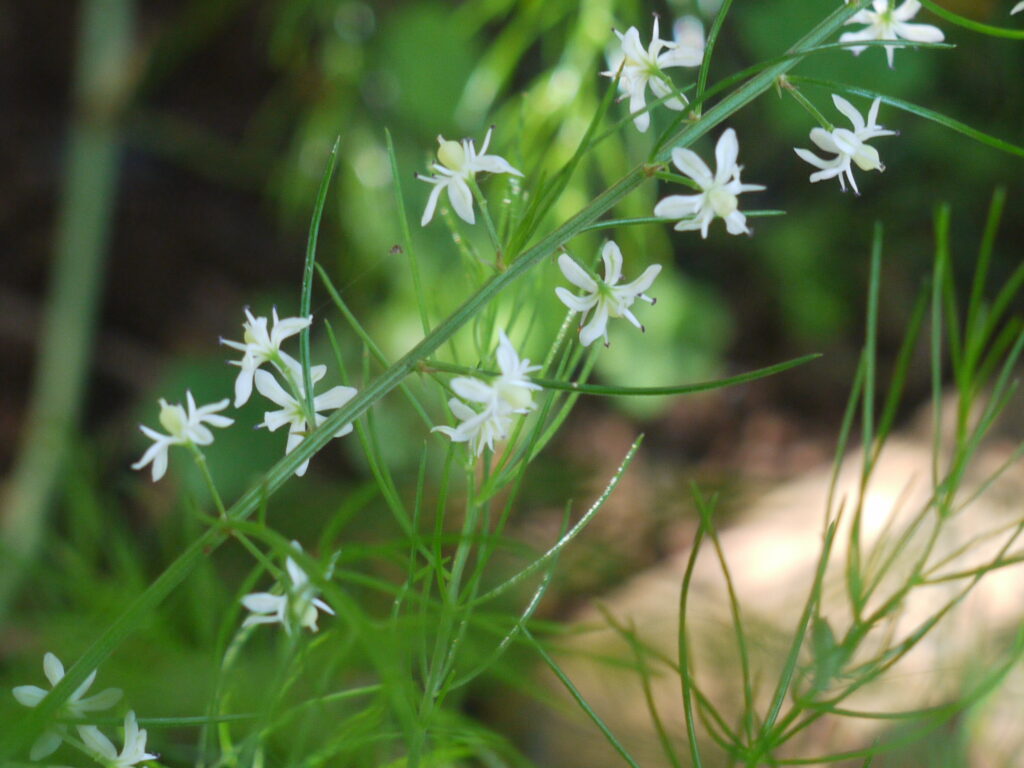Write-up by Dr Viv of the following paper:
O’Leary MF et al (2021). Shatavari Supplementation in Postmenopausal Women Improves Handgrip Strength and Increases Vastus lateralis Myosin Regulatory Light Chain Phosphorylation but Does Not Alter Markers of Bone Turnover. Nutrients. 27;13(12):4282. doi: 10.3390/nu13124282https://www.ncbi.nlm.nih.gov/pmc/articles/PMC8708006/
Summary
- This is the first study to comprehensively test the effects of shatavari on skeletal muscle and bone function.
- Shatavari (1g per day for 6 weeks) improved hand-grip but not knee extensor strength in postmenopause women.
- Myosin contractile function (measured using myosin regulatory light chain phosphorylation) and markers of protein synthesis were increased by shatavari.
- Shatavari did not alter blood markers of bone turnover, or alter bone markers in cells exposed to sera pooled from the shatavari or placebo volunteer groups.
What was the paper about?
This paper is a randomised placebo-controlled trial that tests the effects of shatavari root (Asparagus racemosus Willd) on muscle and bone function in postmenopause women. Muscle strength and function declines in men and women as we age, and is rapid postmenopause where a decline in oestrogen may heighten the decline leading to sarcopenia. Low oestrogen can also decrease bone mineral density. Events like hip fractures become more common and although treatable do cause a 3x increase in all cause mortality compared to the general population (1). So any intervention that improves musculo-skeletal function as we age would be a welcomed medical breakthrough.
Shatavari is an Ayurvedic herb traditionally used as a women’s health tonic, and for supporting fertility and breast feeding. Shatavari is an adaptogen also thought to have anti-inflammatory and anti-oxidant effects (2).

Shatavari flowers (Dinesh Valke CC-BY, Flickr Ref. 3)
Methods followed
This was a randomised, placebo-controlled, double-blind study, approved by the university ethics committee.
Postmenopause women, average age 68.5 years were recruited and randomised to 1g Shatavari root powder in capsule form per day for 6 weeks (n=10) or a placebo (n=10). Participants attended the university for a pre-test visit, and then again for hand-grip and leg strength tests, and to give a blood sample and muscle biopsy on day 1 of the trial. They returned again for tests at week 6 at the end of the trial.
For cell culture experiments, primary human osteoblasts (bone cells) were exposed to sera from volunteers taken at day 1 or at the end of week 6. This was to see whether any active compounds in the serum were having an effect on bone tissue.
The following tests were made:
- Hand-grip strength
- Lower limb strength
- Blood sample for bone turnover markers
- Vastus lateralis muscle biopsy for immunoblotting of muscle proteins and markers
- Osteoblast cell culture tested for differentiation, cytokine production, proliferation and other markers, following exposure to serum from shatavari or placebo groups at day 1 and week 6.
Results
- Shatavari improved hand-grip strength significantly (p<0.05, Mann-Whitney U test) but not knee extensor strength.
- Shatavari increased myosin regulatory light chain phosphorylation measured by immunoblotting in vastus lateralis muscle.
- Shatavari increased protein synthesis via the phosphorylation of Aktser473 shown in muscle biopsy material, but other markers did not change.
- Shatavari did not alter plasma markers of bone turnover.
- In bone cell culture, there were no changes in markers of bone turnover, osteoblast metabolic activity or cytokine production.
Relevance of the results
For the food industry. There are many food supplements on the market containing shatavari root powder. There are generally no claims made by the products. Other menopause products contain soy isoflavones, fennel and sage (which are also herbs used for women’s health). Some make a nutrition claim to reduce tiredness through incorporating magnesium. There is an EU non-authorised (on-hold) botanical claim for shatavari – “Supports the health of the female reproductive system. Helps to maintain balance in female physiology during and after menopause” (4).
Medically. The positive outcomes from this study does warrant more research in pre- and postmenopause women, perhaps looking at a longer time frame to see if changes are sustained, and to give time for changes in bone function to occur. In a medical population it would be important to consider herb-drug interactions particularly as we take more drugs as we get older (5). A quick look at ESCOP.com shows no reported risk associated with the herb.
For future research. More high quality studies should look at shatavari, given the observation of improved muscle strength alongside the molecular changes within the muscle.
Several steroidal saponins (shatavarins I-X) and have been isolated from shatavari, and it also contains flavonoids and polysaccharides (2). The steroidal saponins are thought to have oestrogen-like effects. In one randomised controlled study in lactating mums, a daily shatavari supplement raised levels of prolactin hormone and helped with weight gain (6). As the production of prolactin is controlled by oestrogen (7), future research could explore whether oestrogen changes were part of shatavari’s actions. One study has shown that shatavari given at 500 mg/day could also have a sports application (8).
Visit our freebies page to download a PDF of this article.
Reading list
1 Panula et al (2011). https://www.ncbi.nlm.nih.gov/pmc/articles/PMC3118151/
2 Hayes et al (2008). https://www.sciencedirect.com/science/article/abs/pii/S0031942207005419?via%3Dihub
3 Dinesh Valke Image: Shatavari flowers, CC-BY, Flickr https://www.flickr.com/photos/dinesh_valke/4745632082/in/photostream/
4 UK Gov (2023). https://www.gov.uk/government/publications/on-hold-health-claims-on-foods
5 Age UK (2019). https://www.ageuk.org.uk/latest-press/articles/2019/august/age-uk-calls-for-a-more-considered-approach-to-prescribing-medicines-for-older-people/
6 Gupta and Shaw (2011). https://www.ncbi.nlm.nih.gov/pmc/articles/PMC3869575/
7 Endocrine society (2022). https://www.endocrine.org/patient-engagement/endocrine-library/hyperprolactinemia
8 Anders et al (2020). https://www.ncbi.nlm.nih.gov/pmc/articles/PMC7739404/ *Study funded by supplement producer Natreon Inc.

